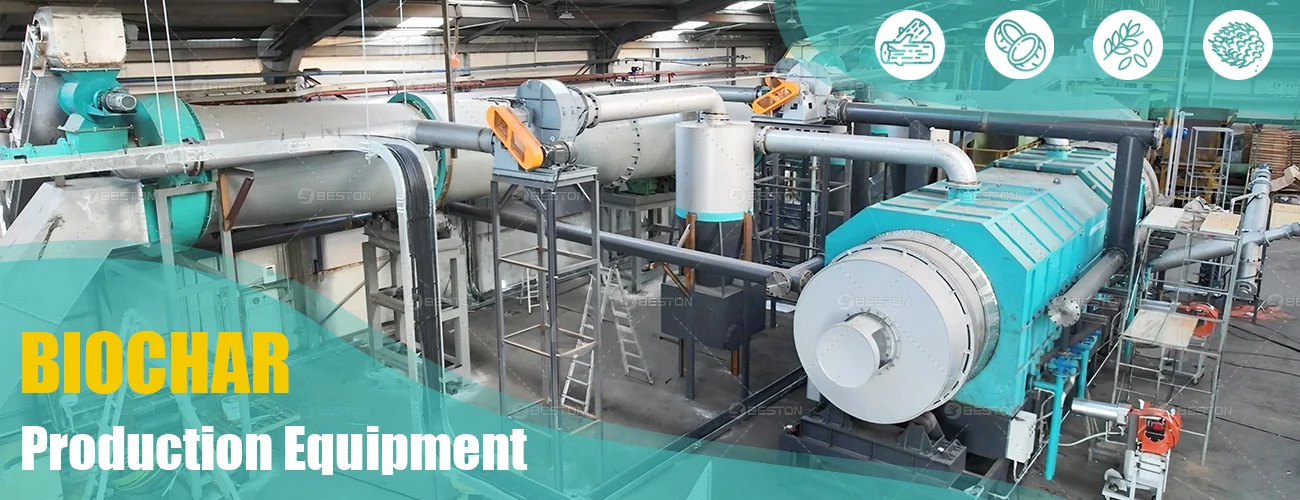The pyrolysis of biomass materials is a critical pathway in the production of renewable fuels and carbonaceous byproducts. While both wood and nut shell can be thermochemically converted in a pyrolysis plant, their distinct physical and chemical properties lead to notable differences in performance, yield, and applications.
Feedstock Density and Structure
Wood typically exhibits a lower bulk density compared to nut shell. Its fibrous cellular architecture contains higher levels of moisture and volatiles, which directly influence thermal decomposition behavior. Nut shell, on the other hand, is denser and structurally more rigid. The high lignin concentration in shells contributes to slower degradation but produces a greater yield of fixed carbon. This structural disparity is central to determining biochar reactor residence time and optimal temperature ranges.

Volatile Composition
During pyrolysis, the release of volatiles dictates the quality and consistency of the gas and liquid fractions. Wood, with its elevated cellulose and hemicellulose content, liberates a broader spectrum of condensable vapors, resulting in higher liquid yields. Nut shell, being richer in lignin and extractives, favors char formation and produces heavier condensates with increased aromaticity. For operators, this means tailoring biochar machine process conditions depending on whether the goal is maximizing bio-oil recovery or producing high-grade charcoal.
Char Yield and Calorific Value
Char yield is a distinguishing metric between the two feedstocks. Nut shell consistently delivers higher char output due to its inherent lignin and fixed carbon content. The resulting material also exhibits superior calorific value, making it more suitable for energy-dense applications such as metallurgy and activated carbon production. Wood-derived char, while lower in fixed carbon concentration, benefits from higher porosity, which can be advantageous in soil amendment and adsorption processes.
Ash and Mineral Content
Mineral content plays a significant role in influencing pyrolysis kinetics. Wood generally contains lower ash fractions, which reduces catalyst-like interference during thermal decomposition. Nut shell, however, may present elevated levels of potassium, calcium, and silica, which can accelerate certain reactions and alter tar composition. These mineral variations require attention in process calibration, especially when scaling up in an industrial pyrolysis plant.
Process Efficiency
The efficiency of conversion is not uniform across biomass types. Wood, with its predictable decomposition profile, is relatively easier to process in continuous systems. It provides steady syngas output, which can be reused for maintaining reactor heat balance. Nut shell, because of its density and higher fixed carbon, may demand higher energy input for initiation but rewards with longer-lasting char combustion properties. Balancing these trade-offs is crucial for achieving economic viability.
Product Applications
The end-use potential of pyrolytic products differs significantly. Charcoal from nut shell is favored in premium markets such as water filtration, gold recovery, and activated carbon due to its hardness and micro-porosity. Wood-derived bio-oil, rich in oxygenated compounds, is often directed toward fuel blending and chemical extraction. This divergence in applications highlights the importance of feedstock selection in aligning with commercial goals.
Environmental Considerations
From a sustainability perspective, both materials offer advantages as renewable feedstocks. However, nut shell, being an agricultural residue, often carries added value by mitigating waste disposal challenges in food processing industries. Wood, particularly from forestry residues, supports circular bioeconomy strategies by utilizing otherwise underexploited biomass. In both cases, optimizing pyrolysis operations ensures reduced emissions and maximized resource efficiency.
Strategic Implications for Industry
Operators planning a pyrolysis plant must account for these feedstock-specific distinctions. A facility targeting high-value activated carbon markets may prioritize nut shell due to its superior char properties. Conversely, projects focused on bio-oil as a renewable fuel precursor may lean toward wood. In practice, blending different biomass inputs can also provide a balanced product spectrum, offering flexibility in volatile-rich oil recovery and carbon-dense char output.
Wood and nut shell share a common pathway through thermochemical transformation, yet their divergence in yield, energy profile, and product quality underscores the necessity of precise material selection. For industries advancing renewable carbon solutions, understanding these differences enables more strategic deployment of pyrolysis technology.
Comments
No comments yet. Be the first to react!